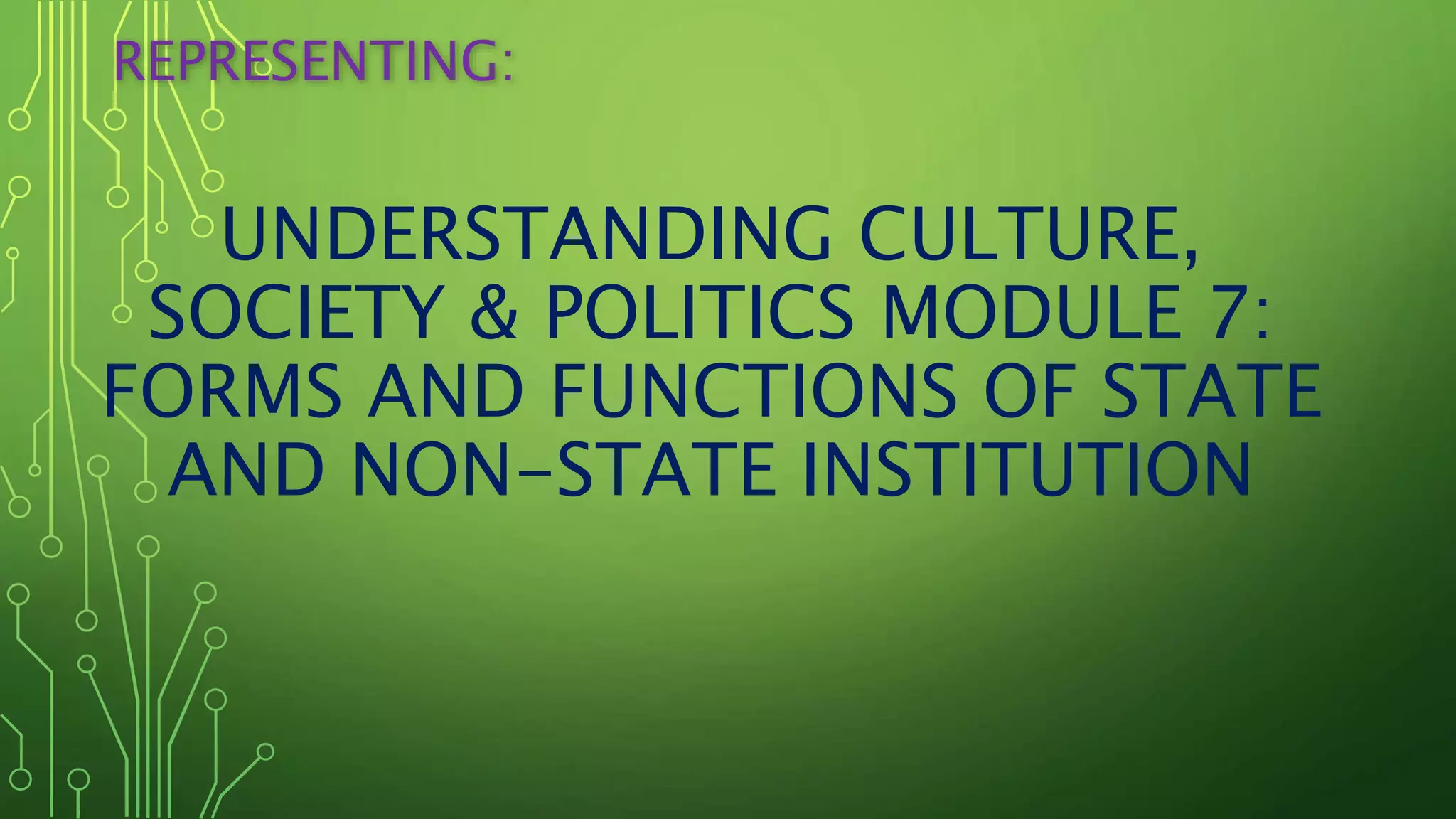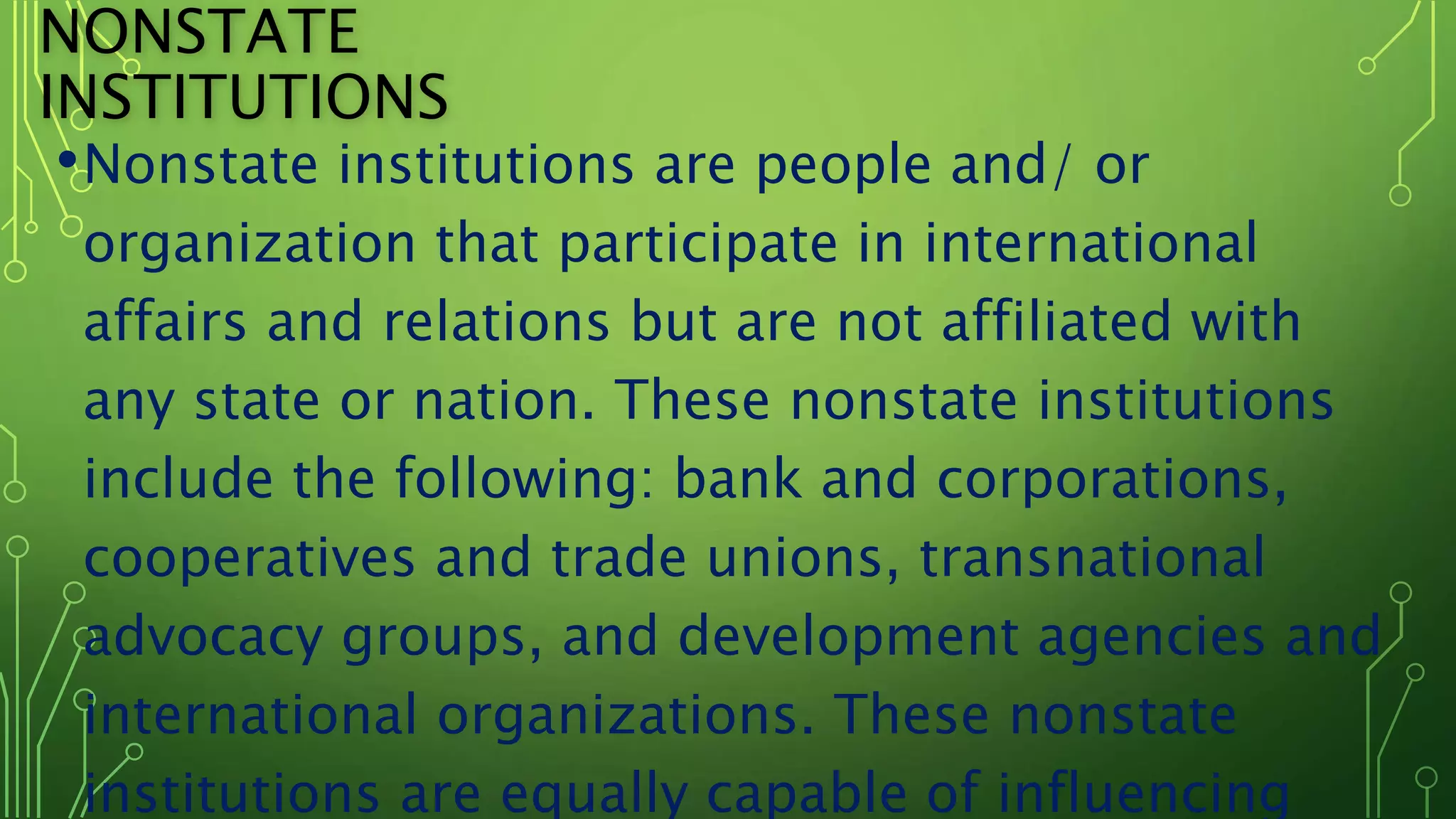This document discusses state and non-state institutions. It defines a state as a political community that occupies a territory and has an organized government that can make and enforce laws. Key functions of the state include maintaining control, allocating resources, and being a focus of identity. Non-state institutions include banks, corporations, cooperatives, trade unions, advocacy groups, and development agencies. There can be both cooperation and conflict between state and non-state institutions as they influence society.






























